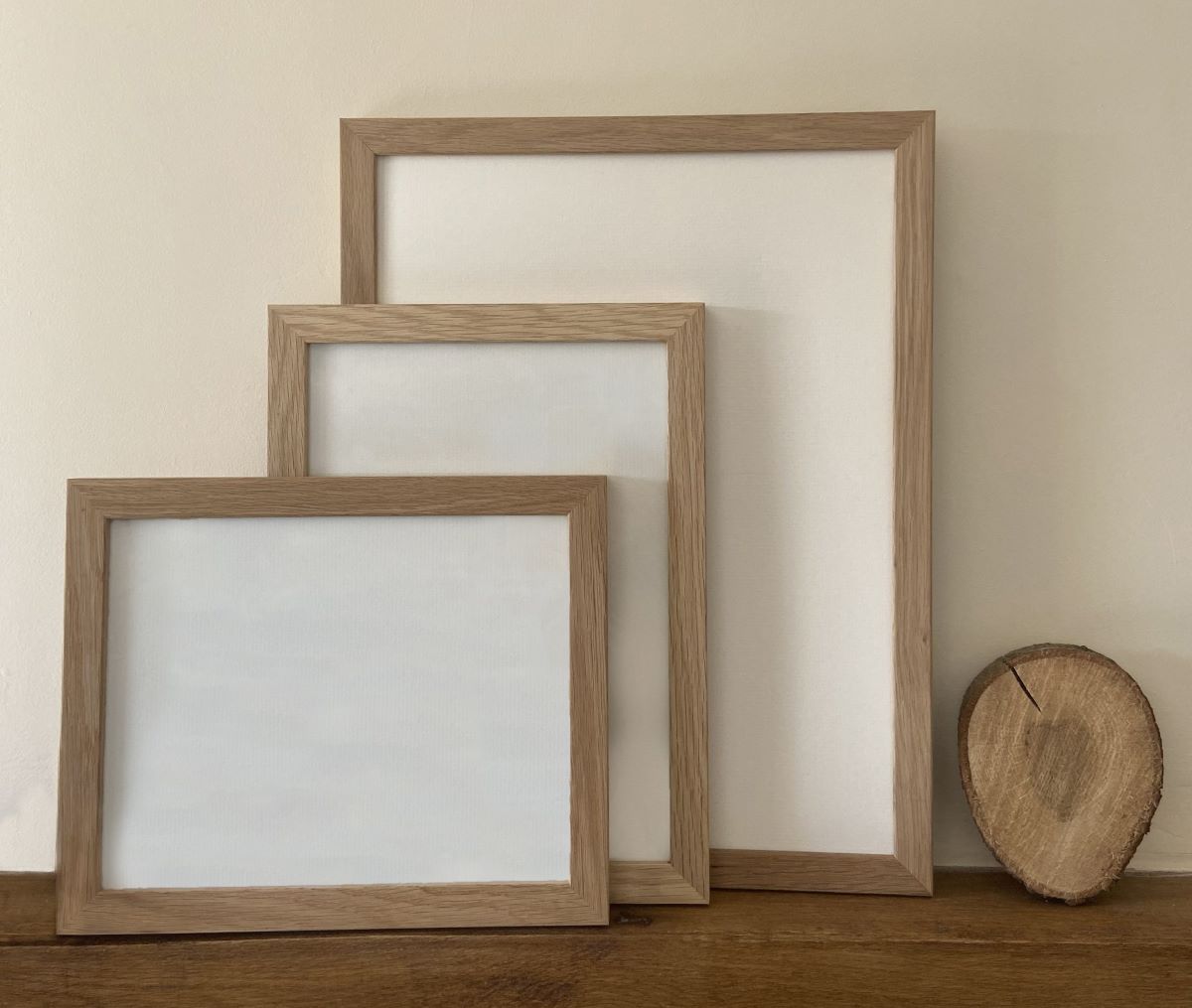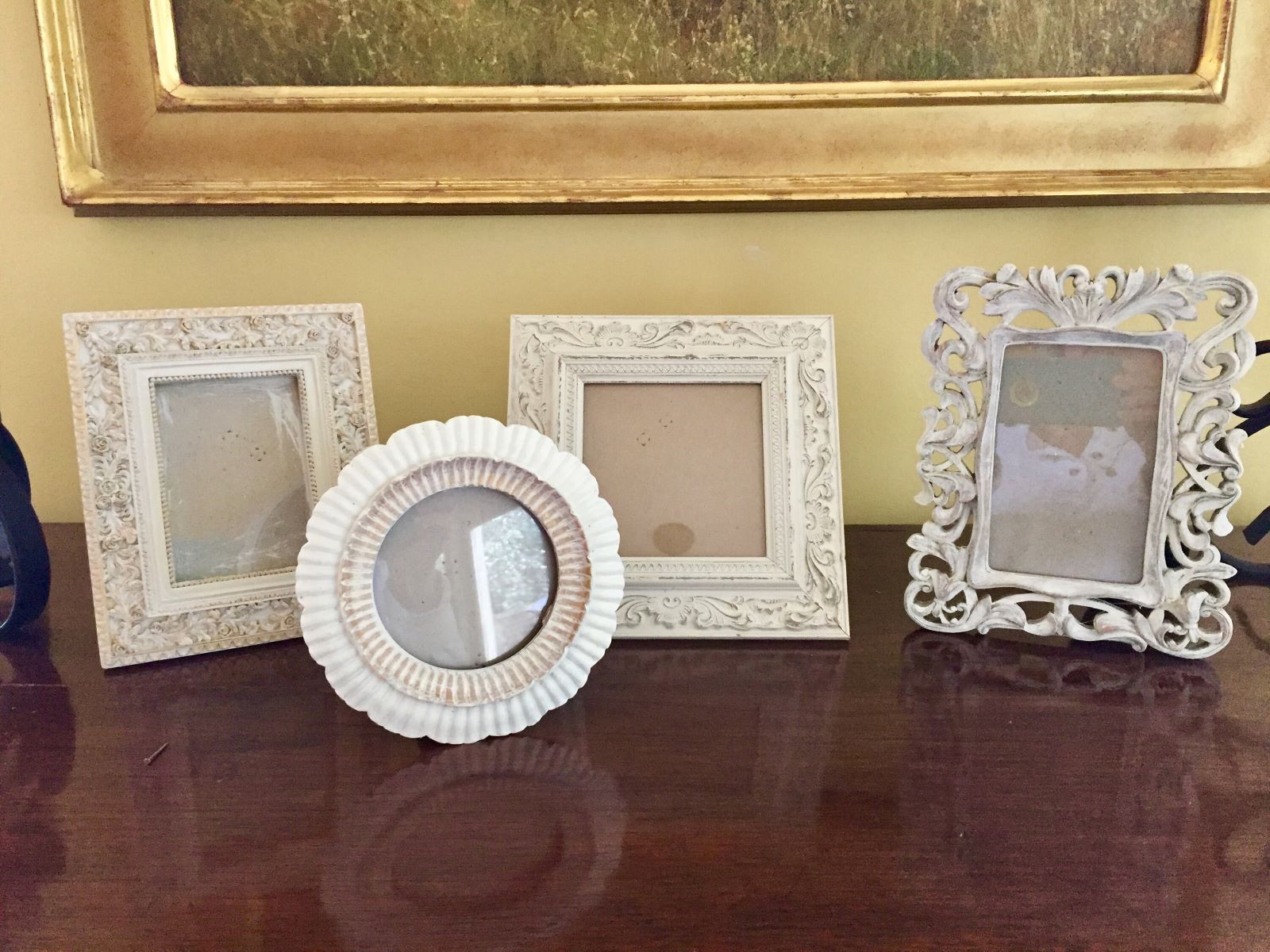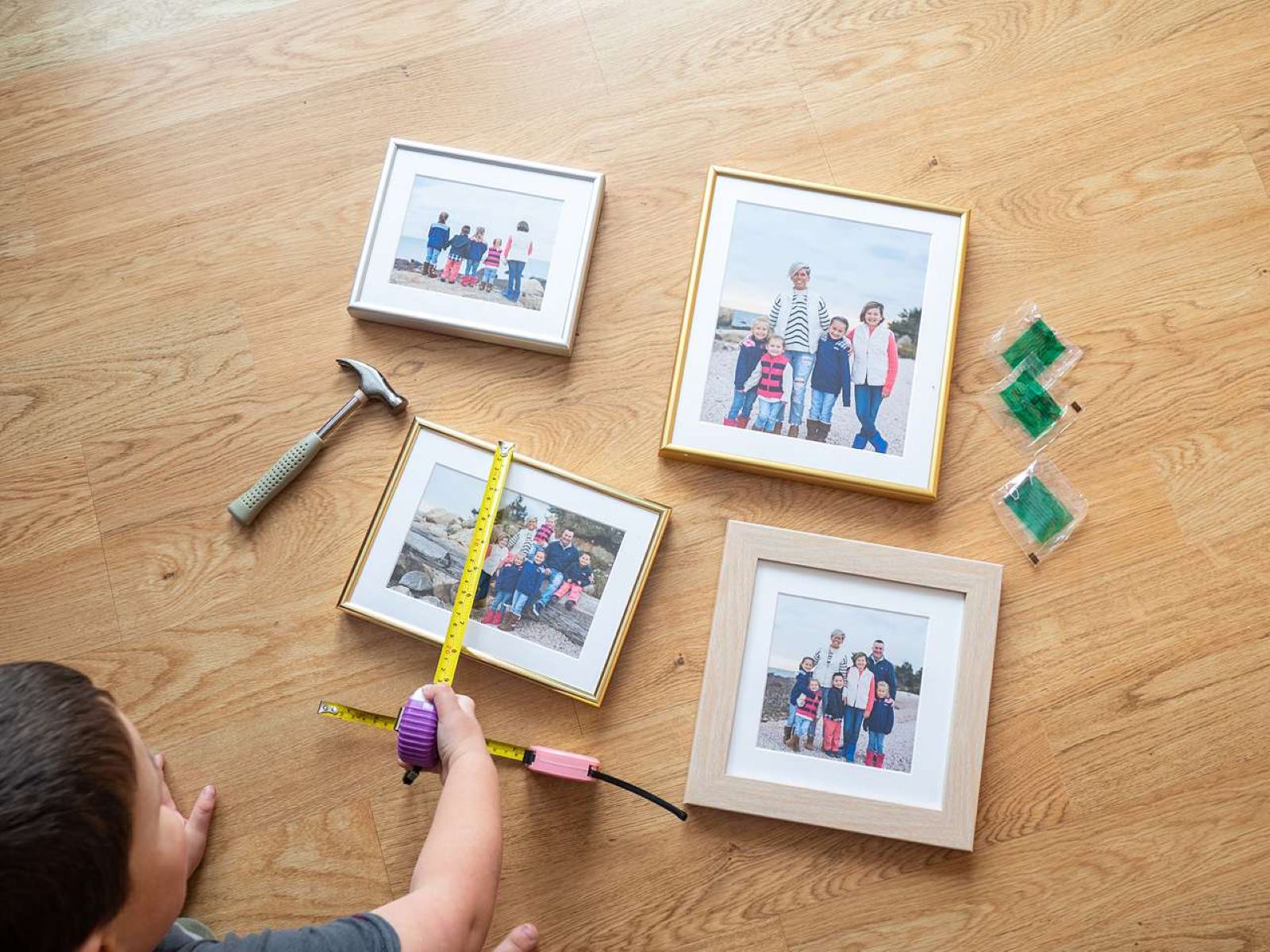

Articles
How High Should Picture Frames Be Hung
Modified: August 28, 2024
Discover the ideal height for hanging picture frames in this informative article. Learn the best practices and avoid common mistakes.
(Many of the links in this article redirect to a specific reviewed product. Your purchase of these products through affiliate links helps to generate commission for Storables.com, at no extra cost. Learn more)
Introduction
When it comes to decorating our homes, hanging picture frames is an art in itself. Choosing the perfect frames and arranging them on our walls can instantly transform a blank space into a personalized and inviting area. However, have you ever wondered how high you should hang your picture frames to achieve the best visual impact?
Properly hanging picture frames not only adds character to a room but also creates a visually pleasing display. There are several factors to consider when determining the ideal height for hanging picture frames, including the eye level rule, wall composition and proportions, furniture and decor placement, and the specific location or room where the frames will be hung.
In this article, we will explore these factors in detail and provide practical tips for hanging picture frames at the perfect height, ensuring that your wall displays have maximum impact and enhance the overall aesthetics of your home.
Key Takeaways:
- Hang picture frames at eye level (57-60 inches) for comfortable viewing. Consider wall composition, furniture placement, and room function for visually pleasing displays.
- Create dynamic gallery walls and playful children’s room displays. Experiment with frame heights, layouts, and themes to personalize your space and showcase cherished memories.
Factors to Consider When Hanging Picture Frames
Before you start grabbing a hammer and nails, it’s important to take into account several factors that will help you determine the ideal height for hanging your picture frames:
- Eye Level Rule: The general rule of thumb is to hang your picture frames at eye level. This ensures that the artwork is easily visible and creates a comfortable viewing experience. The average eye level for most adults is around 57-60 inches from the floor. Keep in mind that this measurement may vary depending on the height of the individuals who will be viewing the artwork. If you have a mix of tall and short individuals in your household, you may want to consider an average height that suits everyone.
- Wall Composition and Proportions: Consider the composition of your wall when hanging picture frames. If you have a large, empty wall, you may want to hang larger frames or create a gallery wall arrangement to fill the space. On the other hand, if you have a smaller wall or limited space, smaller frames or a single statement piece may be more appropriate. Additionally, consider the proportions of the frames in relation to the furniture or decor around them. Ensure that the frames are neither too large nor too small for the space.
- Furniture and Decor Placement: Take into consideration the placement of furniture and other decor elements in the room when deciding on the height for hanging your picture frames. You want to ensure that the frames are not obstructed or overwhelmed by other objects in the room. For example, if you have a sofa or a bed against the wall, it’s advisable to hang the frames slightly above the furniture to create a balanced and visually appealing arrangement.
By factoring in these considerations, you can create a harmonious and well-balanced display of picture frames that complements your overall interior design scheme. Whether you’re looking to create a focal point or a cohesive gallery wall, these factors will guide you in finding the perfect height for your picture frames.
Eye Level Rule
The eye level rule is a fundamental guideline used in the art and design world that helps determine the ideal height for hanging picture frames. It involves positioning artworks at a height that is comfortable for viewers to engage with and appreciate the piece.
The standard eye level for most adults is around 57-60 inches from the floor. This measurement is taken from the center of the artwork, rather than the top or bottom of the frame. Hanging artwork at eye level ensures that it can be easily seen and enjoyed without straining the neck or eyes.
However, it’s important to note that eye levels can differ among individuals based on factors such as height and personal preference. If you have a mix of tall and short individuals in your household or expect a variety of viewers, it may be wise to find a compromise height that accommodates everyone.
When determining the exact height for hanging picture frames, consider the placement of the frames in relation to the function of the room. For example, in a living room or dining area where people primarily stand or sit, aim to hang the frames at an eye level that’s comfortable while sitting or standing. On the other hand, in a hallway or staircase, where people are likely to be walking past the frames, you may want to hang them slightly lower to ensure they can be appreciated at eye level when in motion.
Remember to measure and mark the desired height before hanging your frames. You can use a tape measure or enlist the help of a friend to ensure accuracy. It’s also recommended to use a level to ensure your frames are straight and aligned with other decor elements on the wall.
Utilizing the eye level rule as a starting point will help create a visually pleasing and engaging display of picture frames in your home. It ensures that your artwork is easily seen and appreciated by everyone, enhancing the overall aesthetic and enjoyment of the space.
Wall Composition and Proportions
When it comes to hanging picture frames, considering the composition and proportions of your wall is essential for creating a visually appealing display. Taking into account the size and layout of your wall will help you make informed decisions regarding frame placement and height.
If you have a large, empty wall, you have the opportunity to make a bold statement with your picture frames. Consider hanging larger frames or creating a gallery wall arrangement to fill the space. The key is to create a visually balanced composition that complements the size of the wall. For example, you can arrange larger frames in a grid pattern or create a focal point with a single oversized frame.
On the other hand, if you have a smaller wall or limited space, you need to be mindful of the proportions of the frames you choose. Hanging large frames on a small wall can make the space feel cramped and overwhelming. Opt for smaller frames or a single statement piece that aligns with the scale of the wall.
Another factor to consider is the overall layout of the wall, including any existing furniture or decor elements. Take into account the placement of furniture and other wall hangings in relation to your picture frames. You want to ensure that your frames are not obstructed or overshadowed by other objects in the room.
For instance, if you have a sofa or a bed against the wall, it’s advisable to hang your frames slightly above the furniture to create a cohesive arrangement. This will help establish a visual connection between the frames and the furniture, optimizing the overall balance and harmony of the space.
When arranging a group of frames, such as in a gallery wall, consider the spacing between each frame to ensure a balanced and unified look. Generally, leaving a consistent gap of 2-3 inches between frames will help create a visually pleasing composition.
By paying attention to the composition and proportions of your wall, you can create a visually harmonious display of picture frames that complements the overall aesthetics of your space. It’s all about finding the right balance between the size of your wall, the frames you choose, and the placement of other elements in the room.
Furniture and Decor Placement
When it comes to hanging picture frames, it’s crucial to consider the placement of furniture and other decor elements in the room. Properly positioning your frames in relation to these elements will ensure a cohesive and visually appealing arrangement.
One important principle to keep in mind is to avoid overcrowding or overwhelming the space with too many frames. If you have a room with a significant number of furniture pieces or other decorative elements, it’s best to select a few key frames to showcase rather than filling every available wall space.
When hanging picture frames above furniture, such as a sofa or a bed, it’s generally recommended to leave some space between the furniture and the bottom edge of the frames. This will create a balanced and visually pleasing arrangement. A good rule of thumb is to leave around 8-10 inches of space between the top of the furniture and the bottom edge of the frames.
However, these measurements can vary depending on the proportions of your furniture and the overall visual impact you want to achieve. For example, if you have a low-profile sofa or bed, you may want to hang the frames a bit lower to maintain a visually pleasing balance.
When hanging frames in relation to other decor elements, consider creating a cohesive flow. For example, if you have a gallery wall with a mix of frames and other wall decor, make sure there is a balance in terms of size, color, and style. This will help create a visually unified display that doesn’t feel disjointed or cluttered.
Strategically placing your picture frames in relation to other decor elements will also help draw attention to the focal points in the room. For instance, if you have a statement piece of furniture or a unique architectural feature, you can position frames around it to enhance its prominence and create a captivating visual display.
Remember to take a step back and assess the overall composition as you’re placing your frames. Consider the flow, balance, and overall aesthetics of the space. Making thoughtful decisions regarding furniture and decor placement will result in a well-curated and visually pleasing arrangement of picture frames that enhances the overall ambiance of your room.
When hanging picture frames, the general rule is to position the center of the artwork at eye level, which is typically around 57-60 inches from the floor. This ensures the artwork is easily visible and creates a visually pleasing display.
Read more: How Far Apart Should Picture Frames Be
Hanging Picture Frames in a Gallery Wall
A gallery wall is a popular and creative way to display a collection of picture frames. It allows you to showcase your treasured memories, artworks, and photographs in an organized and visually striking arrangement. When creating a gallery wall, there are a few key considerations to keep in mind.
First, choose a cohesive theme or style for your gallery wall. This could be based on the frames themselves, such as using frames of the same color or material, or it could be based on the content of the frames, such as a collection of family photographs or a set of botanical prints. Ensuring a cohesive theme will bring unity and harmony to your gallery wall.
Next, lay your frames out on the floor or a large table to plan the arrangement. This will allow you to visualize how the frames will look together and make adjustments before hanging them on the wall. Play with different layouts, mixing frame sizes and orientations, until you find a configuration that you’re happy with.
When it comes to hanging the frames, start by locating the center point of your gallery wall and place the largest or most important frame there. This will anchor the arrangement and serve as the focal point. From there, work outward, filling the available space with the remaining frames.
Aim for equal spacing between the frames, creating a balanced and visually pleasing composition. You can use a measuring tape, a level, or even cut out paper templates of your frames to help with alignment and spacing. It’s important to step back frequently to assess the overall arrangement and make any necessary adjustments.
When it comes to the height of your gallery wall, you can follow the same principles mentioned earlier, such as the eye level rule. However, with a gallery wall, you have the freedom to play with different heights and create a dynamic and visually interesting display. This can involve stacking frames vertically or offsetting them at different heights to add depth and visual movement.
Lastly, consider adding other decorative elements to your gallery wall, such as mirrors, artwork, or wall decals, to further enhance its visual appeal. These additional elements can help break up the repetition of frames and add variety to the composition.
By carefully planning and arranging your gallery wall, you can create a captivating and personalized display that showcases your favorite pictures and adds a unique touch to your home.
Hanging Picture Frames in Stairways and Hallways
Stairways and hallways are often overlooked areas when it comes to home decor, but they offer great opportunities to create interesting displays with picture frames. Hanging frames in these spaces can add a touch of personality and style to often-neglected areas. Here are some tips to consider when hanging picture frames in stairways and hallways.
One key consideration is the height at which you’ll hang the frames. In a stairway, a good rule of thumb is to align the center of each frame with the eye level of a person standing on the adjacent step or landing. This ensures that the frames can be easily seen and appreciated as one moves up or down the stairs. To achieve this, you may need to adjust the height of each frame as you go up or down the staircase.
In hallways, you can follow a similar guideline by hanging the frames at eye level. Given that hallways are typically narrower spaces, you may want to consider hanging smaller frames or creating a gallery wall arrangement to maximize the visual impact.
Another aspect to consider in stairways and hallways is the layout and flow of the frames. Staggering the frames on different steps or walls in a stairway can create an interesting and dynamic display. In hallways, you can create a linear arrangement with frames evenly spaced and aligned along the wall.
In terms of spacing between the frames, you can follow a similar approach as with other areas, aiming for equal spacing between frames or creating unique arrangements with varied spacing to add visual interest. Using a measuring tape or paper templates can help you plan and visualize the layout before hanging the frames.
When hanging picture frames in stairways, it’s important to ensure that the frames are securely attached to the wall. Stairways can be high-traffic areas, so using appropriate hooks or nails that can support the weight of the frames is essential. If you’re unsure, consult a professional or utilize specialized hardware designed for heavy-duty hanging.
An additional consideration is the overall theme or style of the frames you choose. You can match the frames with the decor of your stairway or hallway, or you can use this opportunity to add a pop of color or a different design element to make the display stand out.
Hanging picture frames in stairways and hallways is a fantastic way to make these often-overlooked spaces feel more inviting and personalized. With thoughtful planning and creative arrangements, you can transform these areas into visually captivating displays that leave a lasting impression.
Hanging Picture Frames in Children’s Rooms
Decorating children’s rooms with picture frames is a wonderful way to personalize their space and showcase their creativity. Whether you want to display their artwork, family photos, or inspirational prints, here are some tips to consider when hanging picture frames in children’s rooms.
When determining the height at which to hang frames in a child’s room, it’s best to take their perspective into account. Hang the frames at eye level for your child, which will allow them to easily engage with and appreciate the displayed artwork. You can measure their eye level by having them stand or sit in the room and marking the appropriate height on the wall.
Children’s rooms often have lower furniture, such as beds or desks, so it’s important to ensure that the frames are not placed too high on the wall. Leave enough space between the furniture and the frames to create a balanced and visually pleasing arrangement. A distance of 8-10 inches between the top of the furniture and the bottom edge of the frames is typically recommended.
Consider incorporating fun and playful elements when hanging picture frames in children’s rooms. Use colorful frames or frames in unique shapes to add a touch of whimsy to the display. You can also mix and match frames of different sizes and styles to create a dynamic and visually interesting arrangement.
Allow your child to be involved in the process. Encourage them to choose their favorite artwork or photos to be displayed. This will not only give them a sense of ownership over their space but also foster their creativity and self-expression. Consider using clipboards or magnetic frames that allow for easy interchangeability of artwork, allowing your child to showcase their latest masterpiece.
When arranging the frames, you can create a themed display based on your child’s interests. For example, if they love animals, you can create a collage of frames featuring animal prints or photographs. If they have a favorite movie or book character, you can incorporate frames with artwork or images related to that character.
Ensure that the frames are securely hung on the wall, especially in children’s rooms where playfulness and accidents can sometimes occur. Use sturdy hardware and ensure that the frames are properly anchored to the wall. Consider using adhesive hooks or hanging systems specifically designed for children’s rooms to ensure safety.
When hanging picture frames in children’s rooms, it’s important to strike a balance between functionality and creativity. Create a space that showcases your child’s personality, encourages their imagination, and fosters a sense of pride in their artwork and accomplishments.
Conclusion
Hanging picture frames is an art form that allows us to personalize our living spaces while adding beauty and character to our walls. By considering key factors such as the eye level rule, wall composition and proportions, furniture and decor placement, and the specific needs of different rooms, we can create visually stunning displays that enhance the overall aesthetics of our homes.
Adhering to the eye level rule ensures that our artwork is easily visible and can be enjoyed without straining the neck or eyes. However, it’s important to adapt this rule to accommodate the specific heights and preferences of the individuals who will be viewing the frames.
Considering wall composition and proportions is crucial when selecting frames and arranging them on our walls. Whether we have large empty walls or limited wall space, choosing the right frame sizes and creating balanced arrangements will make a significant impact on the overall visual appeal.
Placement of furniture and other decor elements plays a vital role in determining the height and arrangement of picture frames. By ensuring that frames are not crowded or overshadowed by other objects in the room, we can create a harmonious and cohesive display.
When creating gallery walls, stairway displays, or children’s room arrangements, we have the opportunity to be more creative and playful with our frame placements. By experimenting with different heights, layouts, and themes, we can craft visually striking displays that reflect our personal style and showcase our cherished memories and artwork.
Ultimately, hanging picture frames is an opportunity to express our creativity, tell our stories, and create a sense of warmth and personality within our homes. By following these considerations and applying your own personal touch, you’ll be able to create visually pleasing displays that bring joy and beauty to your living spaces.
So, grab your hammer and nails, measure the heights, and unleash your creativity as you embark on the journey of hanging picture frames that will transform your walls into captivating works of art.
Frequently Asked Questions about How High Should Picture Frames Be Hung
Was this page helpful?
At Storables.com, we guarantee accurate and reliable information. Our content, validated by Expert Board Contributors, is crafted following stringent Editorial Policies. We're committed to providing you with well-researched, expert-backed insights for all your informational needs.















0 thoughts on “How High Should Picture Frames Be Hung”